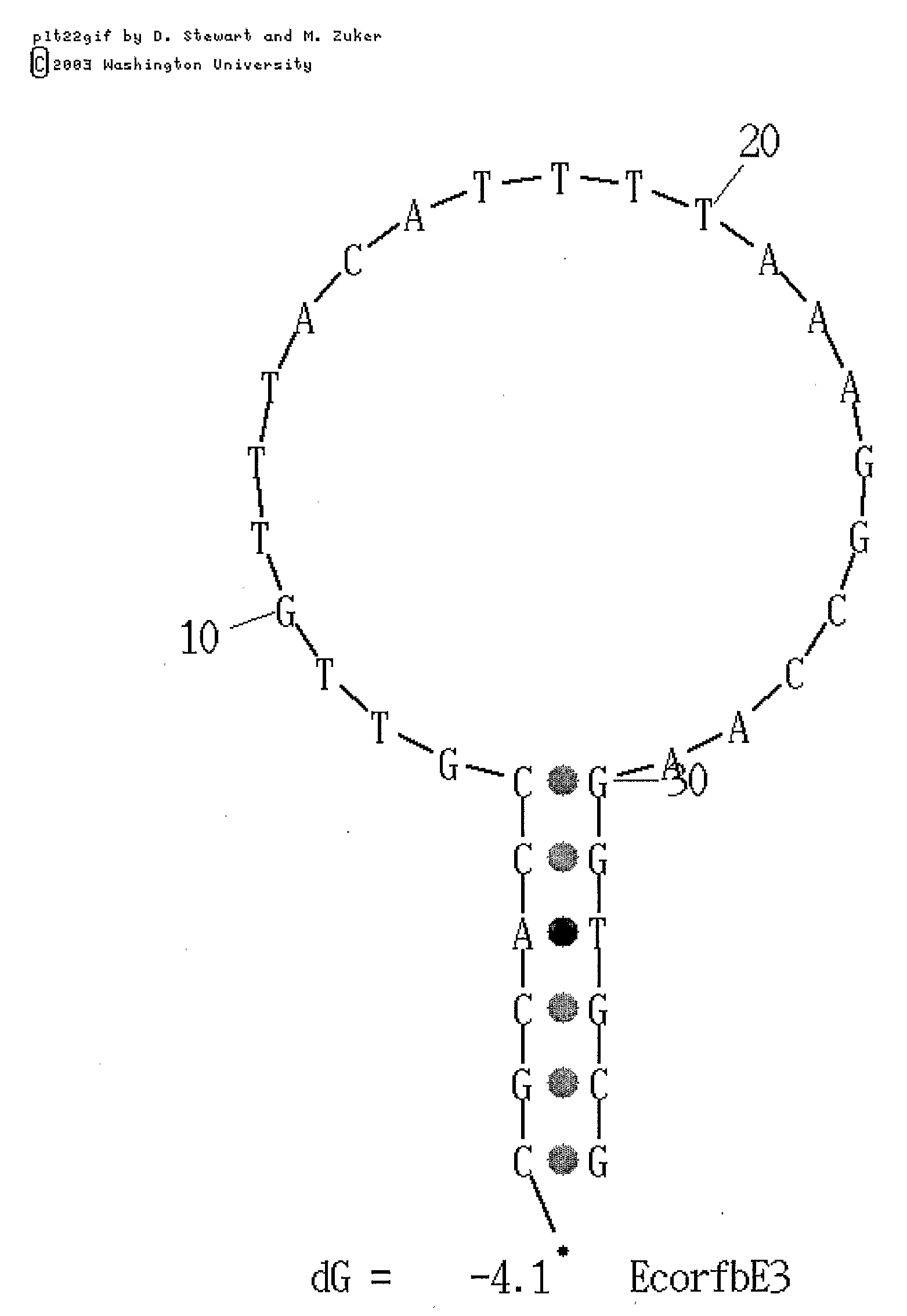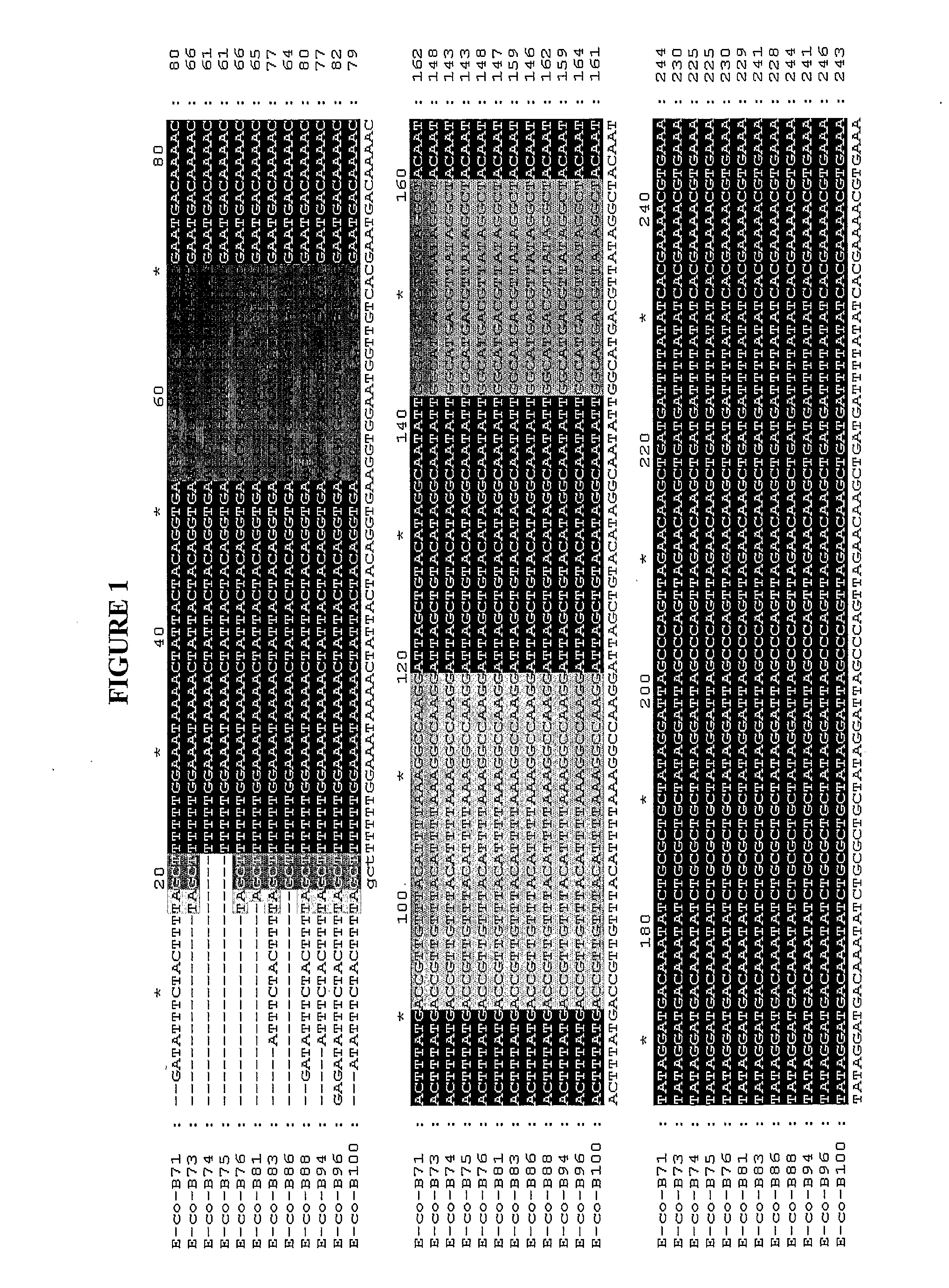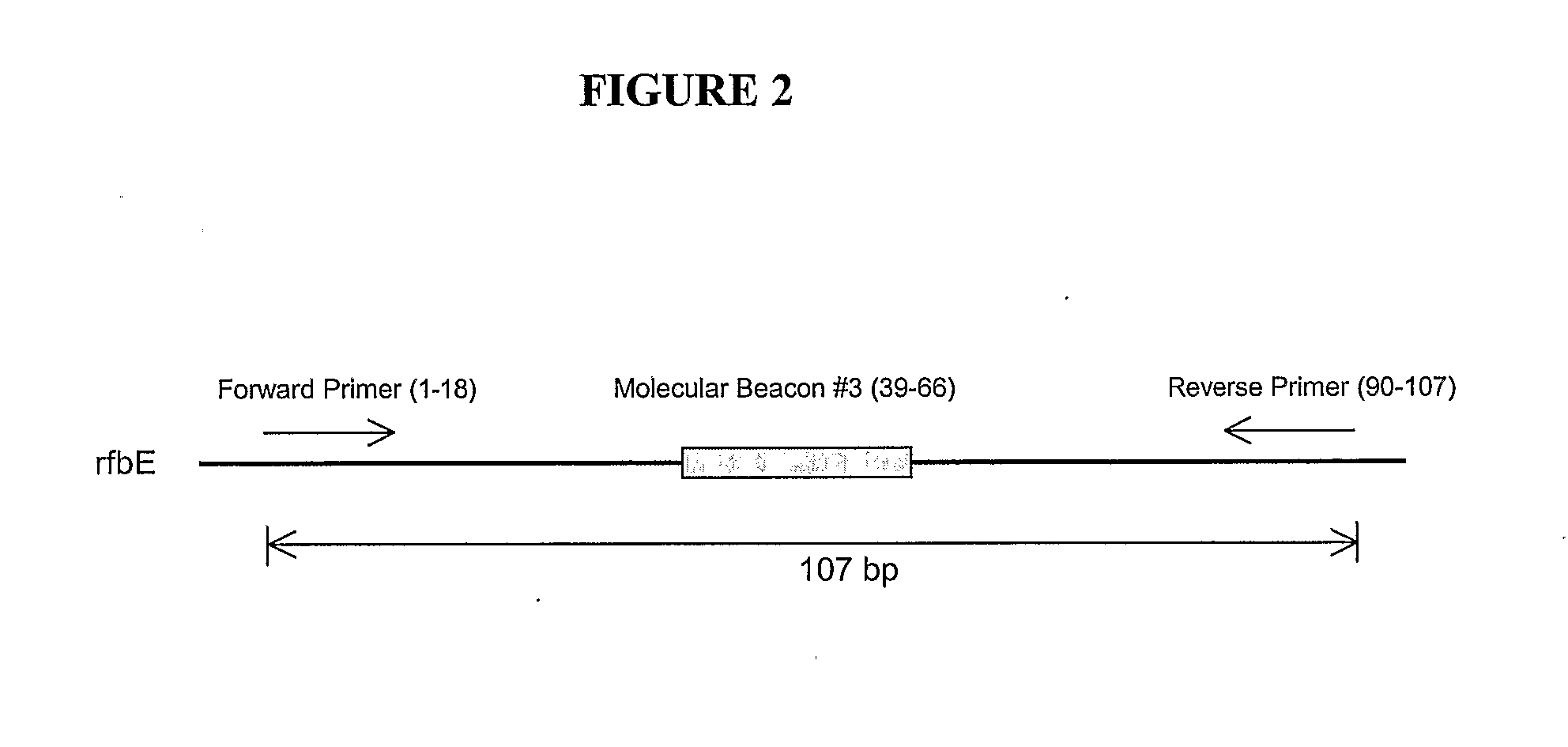Polynucleotides For the Detection of Escherichia Coli 0157
- Summary
- Abstract
- Description
- Claims
- Application Information
AI Technical Summary
Benefits of technology
Problems solved by technology
Method used
Image
Examples
example 1
Determination of Unique, Conserved DNA Regions in E. coli O157 Group
[0115]The rfbE gene coding regions from 12 different E. coli O157 isolates were sequenced and aligned using the multiple alignment program Clustal W™. The resulting alignment was used to identify short DNA regions that were conserved within the E. coli O157 group, yet which are excluded from other bacteria. FIG. 1 depicts a sample of such an alignment in which a portion of the rfbE gene of 12 different E. coli O157 isolates has been aligned. In this Figure, the E. coli O157 isolates are:[0116]E-co-B71: E. coli serotype O157:H7 (SEQ ID NO:2)[0117]E-co-B73: E. coli serotype O157:H7 (SEQ ID NO:3)[0118]E-co-B74: E. coli serotype O157:H7 (SEQ ID NO:4)[0119]E-co-B75: E. coli serotype O157:H7 (SEQ ID NO:5)[0120]E-co-B76: E. coli serotype O157:H7 (SEQ ID NO:6)[0121]E-co-B81: E. coli serotype O157:H7 (SEQ ID NO:7)[0122]E-co-B83: E. coli serotype O157:H7 (SEQ ID NO:8)[0123]E-co-B86: E. coli serotype O157:H7 (SEQ ID NO:9)[0124...
example 2
Generation of PCR Primers for Amplication of the rfbE Gene Segment
[0129]Within the conserved 107 nucleotide sequence identified as described in Example 1, two regions that could serve as primer target sequences were identified. These primer target sequences were used to design a pair of primers to allow efficient PCR amplification. The primer sequences are shown below:
Forward primer:5′-AGGTGGAATGGTTGTCAC-3′[SEQ ID NO:16]Reverse primer:5′-AGCCTATAACGTCATGCC-3′[SEQ ID NO:17]
[0130]In the alignment presented in FIG. 1, the positions of the forward and reverse primers are represented by shaded boxes. The forward primer starts at position 53 and ends at position 70 of the alignment. The reverse primer represents the reverse complement of the region starting at position 142 and ending at position 159.
example 3
Generation of Molecular Beacon Probes Specific for E. coli O157
[0131]In order to design molecular beacon probes specific for E. coli O157, a region within the primer amplification region described above was identified which not only was highly conserved in all E. coli O157 isolates but was also exclusive to E. coli O157 isolates. This sequence consisted of a 28 nucleotide region that would be suitable for use as a molecular beacon target sequence. The sequence is provided below:
5′-ACCGTTGTTTACATTTTAAAGGCCAAGG-3′[SEQ ID NO:15]
[0132]The complement of this sequence is also suitable for use as a molecular beacon target sequence.
[0133]A molecular beacon probe having the sequence shown below was synthesized by Integrated DNA Technologies Inc.
Molecular beacon probe #3:[SEQ ID NO: 18]5′-CGCACCGTTGTTTACATTTTAAAGGCCAAGGTGCG-3′
[0134]The complement of this sequence (SEQ ID NO:19, shown below) can also be used as a molecular beacon probe for the detecting E.coli O157.
[SEQ ID NO:19]5′-CGCACCTTGG...
PUM
| Property | Measurement | Unit |
|---|---|---|
| Length | aaaaa | aaaaa |
| Content | aaaaa | aaaaa |
Abstract
Description
Claims
Application Information
 Login to View More
Login to View More - R&D
- Intellectual Property
- Life Sciences
- Materials
- Tech Scout
- Unparalleled Data Quality
- Higher Quality Content
- 60% Fewer Hallucinations
Browse by: Latest US Patents, China's latest patents, Technical Efficacy Thesaurus, Application Domain, Technology Topic, Popular Technical Reports.
© 2025 PatSnap. All rights reserved.Legal|Privacy policy|Modern Slavery Act Transparency Statement|Sitemap|About US| Contact US: help@patsnap.com



